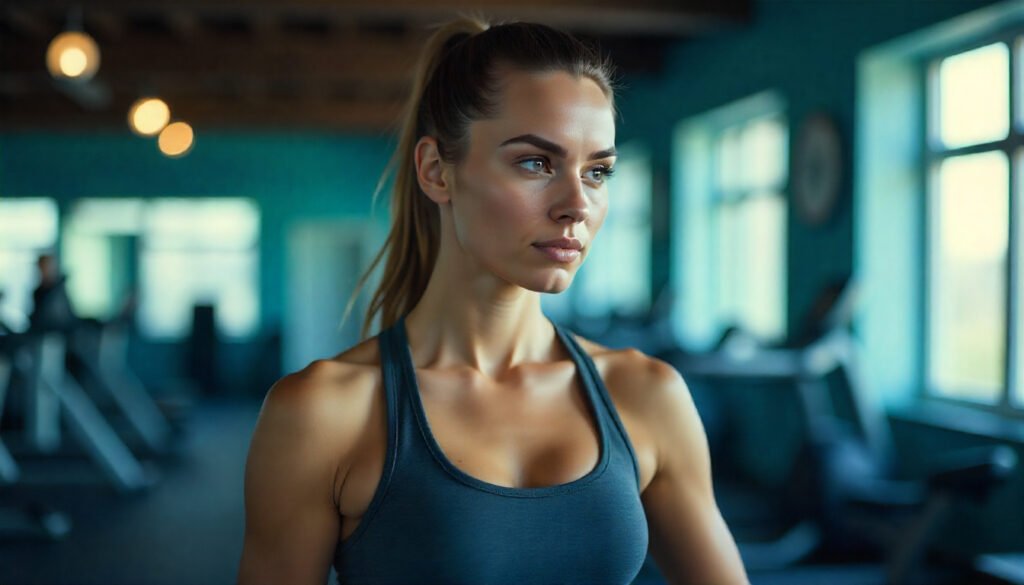The Impact of Bra Style on Breast Health
Introduction
The bra is more than just a wardrobe staple—it plays a direct role in a woman’s comfort, posture, and breast health. From supporting breast tissue during movement to reducing strain on the back and shoulders, the right bra style can make a significant difference in daily well-being. On the other hand, the wrong fit or design may lead to breast pain, poor spinal alignment, or even long-term issues like skin irritation and sagging.
Understanding the impact of
h helps women choose designs that not only enhance aesthetics but also protect their bodies. Whether it’s a sports bra, push-up bra, balconette bra, bralette, or wireless bra, each type has its own effect on breast support and overall comfort. The key lies in balancing comfort vs aesthetics while prioritizing posture and long-term breast care.
Understanding Breast Health
When we talk about breast health, it goes beyond medical conditions—it includes daily comfort, proper breast support, healthy posture & spinal alignment, and good circulation & lymphatic flow. A well-chosen bra should reduce breast tissue strain, prevent unnecessary back pain, shoulder pain, and neck strain, and allow for natural movement without discomfort.
Poorly designed or ill-fitting bras, however, can create multiple problems. Wearing the wrong cup size & band size often leads to mastalgia (breast pain), restricted circulation, and even skin irritation or chafing. Over time, lack of support can accelerate sagging (ptosis) prevention challenges, particularly in women with heavier breast density. In some cases, a tight or restrictive design—such as the wrong underwire vs non-wired choice—can also affect breathing and posture.
In short, everyday breast health is shaped not just by hormones or age, but also by the bra style a woman wears regularly. Choosing wisely is the first step to protecting long-term comfort.
The Role of Bra Style in Support and Comfort
Different bra styles are designed with specific purposes, and each one can influence breast support and long-term health. For example, a sports bra vs regular bra for breast support offers significantly different outcomes. Sports bras are built to minimize bounce during exercise, reducing breast tissue strain and preventing breast pain during high-impact activities. A balconette bra or push-up bra, on the other hand, focuses more on shaping and lift, which enhances appearance but may not always provide the healthiest everyday support.
A wireless bra or bralette can improve comfort by eliminating pressure points, making it ideal for women sensitive to underwire vs non-wired tension. Meanwhile, a full coverage bra is often recommended for women with larger cup sizes, as it evenly distributes weight and helps reduce back pain and shoulder pain.
No matter the design, the most critical factor is the correct bra fit / sizing. Even the healthiest bra styles lose their benefits if the cup size & band size are wrong. Properly fitted bras not only protect posture & spinal alignment but also support natural circulation while reducing risks of skin irritation and premature sagging.
Positive Impacts of the Right Bra Style
Wearing the right bra style has measurable benefits for both physical and emotional well-being. One of the most noticeable is posture improvement. A supportive bra helps maintain healthy spinal alignment, reducing slouching and evenly distributing the weight of the breasts across the shoulders and back.
Proper support also means less back pain, shoulder pain, and neck strain, particularly for women with larger breasts. By keeping the breasts lifted and stabilized, the right style reduces unnecessary breast tissue strain, which can otherwise cause chronic discomfort.
In addition, a correctly fitted bra encourages healthy circulation & lymphatic flow, preventing the pressure points and restricted breathing often linked to poorly chosen designs. This reduces the likelihood of mastalgia (breast pain) and improves overall comfort throughout the day.
Beyond the physical benefits, there is also a psychological impact. Choosing a bra that balances comfort vs aesthetics can boost body confidence, enhance self-image, and provide reassurance that one’s breast health is being actively supported.
Potential Negative Effects of the Wrong Bra Style
Just as the right design supports comfort, the wrong bra style can negatively affect breast health. For instance, ill-fitting underwire bras often create pressure points that lead women to wonder, “is underwire bad for breast health?” In many cases, the problem lies not in the wire itself but in poor cup size & band size, which can restrict circulation & lymphatic flow and cause long-term discomfort.
Too-tight bras are another common issue. When the band digs into the skin, it can result in skin irritation, chafing, and even breathing restriction. Over time, this may also impact posture and contribute to back and shoulder pain. The effects of tight bras on circulation are particularly concerning, as restricted flow may worsen swelling or tenderness during hormonal breast changes such as PMS or pregnancy.
Finally, a lack of proper support—such as wearing a flimsy style instead of bras that prevent breast sagging—can lead to premature ptosis and increased breast tissue strain during physical activity. Women with heavier breast density or those engaging in high-impact exercise especially need adequate support; otherwise, discomfort and long-term sagging are almost inevitable.
In short, the wrong bra style can cause more harm than good, highlighting why correct fit and design are essential for everyday breast support.
Choosing the Right Bra Style for Your Needs
Finding the healthiest bra isn’t about following fashion trends—it’s about matching bra style to your unique body type, breast size, and lifestyle. Women with larger breasts often benefit from full coverage bras or ergonomic bras for posture correction, which distribute weight evenly and help prevent back and shoulder pain. For lighter support, a wireless bra or bralette may be more comfortable, particularly for those seeking long-term ease and reduced breast tissue strain.
Activity level also plays a major role. For workouts or running, the sports bra vs regular bra for breast support debate has a clear winner: sports bras. They provide superior impact control, protect against breast pain, and reduce sagging caused by repetitive motion. For everyday use, the healthiest bra styles for everyday wear include soft-cup designs and properly fitted underwire options, as long as the cup size & band size are correct.
Some women may also need to adjust their bra choice during hormonal breast changes such as pregnancy, breastfeeding, or menopause. During these times, flexible fabrics and supportive bras for women with large breasts health concerns can provide comfort while preventing skin irritation.
If discomfort persists, it’s worth seeking professional fitting advice. Experts, including OB-GYNs and physiotherapists, often recommend fittings to identify the best bras for breast pain relief and to ensure proper breast support that protects both health and posture.
Final Thoughts
The connection between bra style and breast health is undeniable. From improving posture & spinal alignment to reducing breast pain, back pain, and shoulder strain, the right choice can protect long-term comfort while preventing issues such as sagging or restricted circulation. On the other hand, poor fit or unhealthy styles can create unnecessary pressure, irritation, and strain on breast tissue.
The takeaway is simple: prioritize comfort and correct bra fit over trends. Whether choosing a sports bra, wireless bra, or full coverage design, the healthiest approach is one that balances support with aesthetics. When in doubt, consult professional fitting experts or seek medical recommendations from an OB-GYN or physiotherapist to find the best bra for breast health.
Your body changes with time—so should your bra. Reassessing size and style regularly ensures ongoing comfort, confidence, and care for your breast health.
FAQs
Does bra style really affect breast sagging?
Yes. While natural factors like age, genetics, and breast density play a role, the wrong bra style or lack of support can increase breast tissue strain, leading to premature sagging (ptosis). Supportive designs such as bras that prevent breast sagging or well-fitted sports bras help minimize this risk.
Are sports bras better for breast health?
For physical activity, absolutely. The sports bra vs regular bra for breast support comparison shows sports bras reduce bounce, protect against breast pain (mastalgia), and lower strain on breast ligaments. However, for daily use, the healthiest bra styles for everyday wear balance support, comfort, and breathability.
Can underwire bras cause health problems?
Not necessarily. Many women ask, “is underwire bad for breast health?” The truth is that problems usually come from the wrong cup size & band size, not the wire itself. A poorly fitted underwire can restrict circulation & lymphatic flow, cause skin irritation, or create pressure points, but a correctly fitted one can be both safe and supportive.
How often should I replace my bras?
Most experts recommend replacing bras every 6–12 months, depending on wear and washing. Over time, elastic stretches, reducing breast support and impacting posture & spinal alignment. Regularly reassessing fit ensures continued comfort, prevents back and shoulder pain, and helps you maintain the best bras for breast health.

